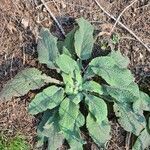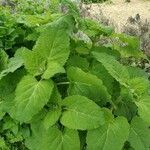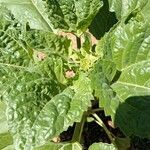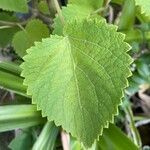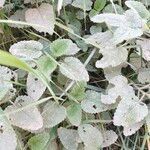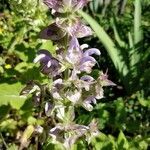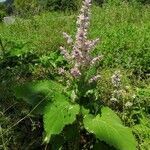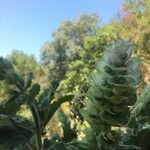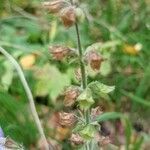Annual or biennial herb, up to 0.9 m high. Stems erect, herbaceous, hairy. Leaves basal in a rosette; petiolate; blade conspicuous, broadly ovate, up to 140 x 120 mm, densely hairy, upper surface rugose, apex cuspidate, purplish pink; petioles up to 50 mm long. Flowers: verticils 4-6-flowered; bracts ovate, persistent, longer than calyx, blade broadly ovate, apex cuspidate, purplish pink; calyx white or lilac, teeth spinose; corolla ± 20 mm long, upper lip curved, whitish mauve.
A plant with a two year life cycle. It grows to 1 m high and spreads to 1 m across. The stem is erect and square in cross section. It is brown and has few branches. The leaves are velvety and without leaf stalks. They occur in pairs. They are oblong, heart shaped and wrinkled with irregular margins. The flowers are pale blue or white. They occur in loose clusters at the ends of branches.
